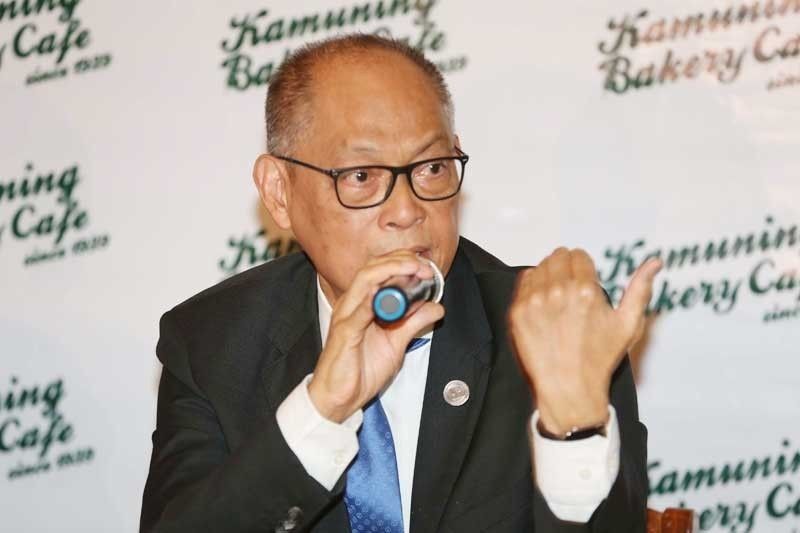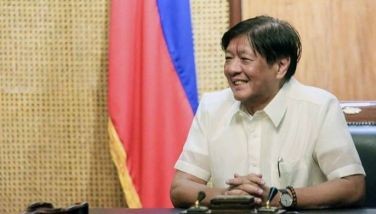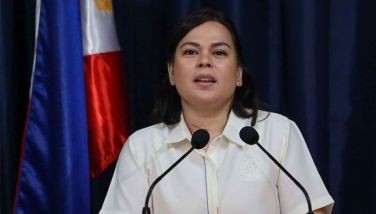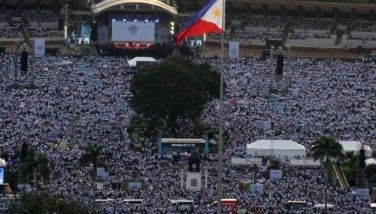Benjamin Diokno hints at steady cuts in bank reserves

MANILA, Philippines — Bangko Sentral ng Pilipinas Governor Benjamin Diokno may cut the level of deposits banks are required to keep with the central bank by one percentage point over the next four quarters amid the steady downtrend in inflation, In an interview with ANC, Diokno said lower inflation as well as the easing of the normalization process by the US Federal Reserve and the European Central Bank due to the weakening global economy, gives monetary authorities room for monetary easing.
“Looking at the domestic and international situation, there’s room for monetary easing. I’m convinced that there’s room for monetary easing,” Diokno said.
For one, Diokno said the country’s reserve requirement ratio (RRR) is the highest in the region despite the 200 basis point reduction from 20 percent to 18 percent from 20 percent last year.
“But if there’s a need, if we have to ease, it’s because our required reserves ratio is very high. It’s one of the highest in the region at 18 percent. I think there’s room for monetary easing. It could be one percentage point every quarter for the next four quarters,” Diokno said.
Diokno said the reduction could free up more funds to the financial system to support the country’s growing economy.
“We’ll look at the data and see because every time we reduce our reserve requirement by one percent that translates to P90 to P100 billion pesos in the economy,” the BSP chief added.
The BSP slashed the RRR twice last year, one in March and another in June, freeing up close to P200-billion in additional liquidity into the financial system.
At the same time, the central bank lifted benchmark rates by 175 basis points in five straight rate-setting meetings from May to November last year to prevent inflation from spiralling out of control.
Inflation accelerated to 5.2 percent last year from 2.9 percent in 2017 due to elevated oil and food prices as well as weak peso but has eased to 3.8 percent in February after peaking at 6.7 percent in September and October last year.
This allowed monetary authorities to take a breather from its tightening episode by keeping rates unchanged last December and February.
Diokno is set to preside over his first rate-setting meeting as chairman of the Monetary Board on March 21.
“So all these will factor in when we make a decision at some point. I won’t telegraph my move, but I have to consult the board and of course the staff. And you could also go back, if you look at the peak in September and October, there’s a trend,” Diokno said.
Diokno said the RRR reduction would not be used to fund the Build Build Build program of the national government as several countries have committed funds including Japan and China with $9 billion each as well as Korea with $1 billion.
These, Diokno said are on top of the revenues raised from Republic Act 10963 or the Tax Reform for Acceleration and Inclusion (TRAIN) Law as well as the funds raised by the Bureau of the Treasury.
“Those ambitions projects are already well funded, so I won’t have to resort to monetary easing to have those funded,” Diokno said.
He said the Philippine has a lot of catching up to do as it has the poorest infrastructure in this part of the world, having spent only 2.6 percent of the gross domestic product (GDP) for infrastructure.
“We are targeting around seven percent because I’m worried right now with the non approval, our 2019 budget is still in Congress. The President still has to sign the budget. So that could be a drag on the seven to eight percent. I’m circling for seven percent at the moment,” Diokno said.
HSBC economist Noelan Arbis said the BSP may slash the RRR level by 300 basis points to 15 percent by the end of 2019.
Likewise, Arbis said the central bank would also cut interest rates by 50 basis points this year.
- Latest
- Trending





























